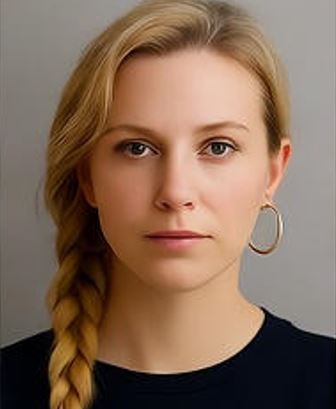This food looks too good to be real - and it is
Discover the fascinating world of “Shokuhin Sampuru” in a unique exhibition in London. These realistic food replicas not only attract attention, but also tell the story of Japanese food culture.

This food looks too good to be real - and it is
A perfectly placed bite of spaghetti literally floats in the air on a fork. There is a bowl next to it Ramen and a katsudon – freshly fried eggs with pork chop – just out of the pan. Plates stacked high display colorful sashimi and unusual parfaits. It's a feast for the eyes - but only for the eyes.
What are Shokuhin Sampuru?
These attractions are known as “Shokuhin Sampuru” – extremely realistic food replicas that are often displayed outside restaurants in Japan to attract customers. A number of these replicas are now on display in London, in an exhibition that, according to Simon Wright, the curator and program director of Japan House London, which is the first of its kind.
The exhibition “Looks Delicious!”
The exhibition " Looks delicious! " presents replicas made by the Iwasaki Group, the first company dedicated to the production of these artificial foods and is now the largest manufacturer in Japan. (According to Wright, the company needs to create a replica every 40 minutes on average to survive economically.) The founder, Takizo Iwasaki, was supposedly inspired, as a child he saw wax fall into a puddle and turn into the shape of a flower.
The beginnings of food replicas
A version of Iwasaki's first replica - modeled after an omelette that his wife made - is on display in the exhibition under the name "kinen omu", or celebration omelette. Over time, Iwasaki developed a production method using wax and agar gel molds, although today the company primarily uses PVC.
The origin story of the food replicas is a “mess,” according to Nathan Hopson, a professor of Japanese at the University of Bergen. Hopson explained in a video call with CNN that there are numerous theories about how these replicas were introduced into Japanese culture.
The goal behind the replicas
A widespread explanation according to Japan House, says these recreations were created to familiarize Western dishes to a "curious but cautious" Japanese audience who otherwise wouldn't know what to expect when ordering. In addition to a variety of traditional Japanese foods, the exhibition also features highly realistic depictions of bacon, eggs and grilled cheese.
The heart of the exhibition
The centerpiece of the exhibition is a map of Japan made up of food replicas representing each of the country's 47 prefectures. Each replica was specially commissioned and made by the Iwasaki Group, who recreated some dishes for the first time.
Choosing one dish per prefecture wasn't easy for Wright's team. They started with a list created by the Japanese Ministry of Agriculture and Fisheries and also contacted people from the regions. “You quickly discover that a lot of people have a lot of opinions about it,” Wright said.
The challenge of realism
An exception was made for the northernmost prefecture of Hokkaido, which is represented by two dishes: “Kaisen-don,” a bowl of rice with seafood, and “Ohaw,” a soup made by the indigenous Ainu community. The Iwasaki Group had never made a replica of Ohaw before, so the exhibition team had to ask the community for the dish, which was sent to Osaka overnight, photographed and made into a replica the next day.
One of the most difficult techniques in replication is creating the appearance of realistic liquids. Done correctly, it creates the impression that soup bowls and wine glasses could tip over the table if a curious visitor handles them improperly.
The importance of the replicas
According to Wright, these foods exhibit a “hyperrealism” that aims to capture the memory and imagination of potential customers – and hopefully catch their eye. “They’re designed to attract people in no time,” he said. “To entice them to eat lunch or dinner there.”
Importantly, people trust that the food shown on the display is what they can expect in real life, something Hopson calls a “promise.” “I can go to any place in Japan, any city, and know exactly what I’m going to get,” he added.
But the replicas are more than just attractive marketing. They also serve a practical purpose that dates back to their introduction by Shirokiya, a major department store, after a devastating earthquake on Japan's main island in 1923.
The department store was one of the first places to open after the Tokyo earthquake, offering a service to the many people who could no longer cook for themselves at home. Instead of having to place orders upstairs in the department store cafeteria, a new system was developed: window displays show customers what kind of food is on offer while they wait.
The evolution of food replicas
"It's really about this management aspect, about rationalization on the supply side, which has a lot to do with creating a new modern, capitalist success story," said Hopson, who added that they really came into being in the 1970s, Japan's so-called "Year Zero" for fast food.
Although they remain a common sight in restaurant windows across Japan, the replicas are also evolving in function. The exhibition shows how food replicas can be used for quality control in agriculture, food production and for nutritional purposes by displaying the ideal diet for diabetics.
The exhibition also offers visitors the opportunity to arrange their own bento box with the replica specialties. Who said you shouldn't play with your food?
“Looks Delicious!” runs until February 15th. Take a look at the other pictures from the exhibition.

 Suche
Suche
 Mein Konto
Mein Konto
